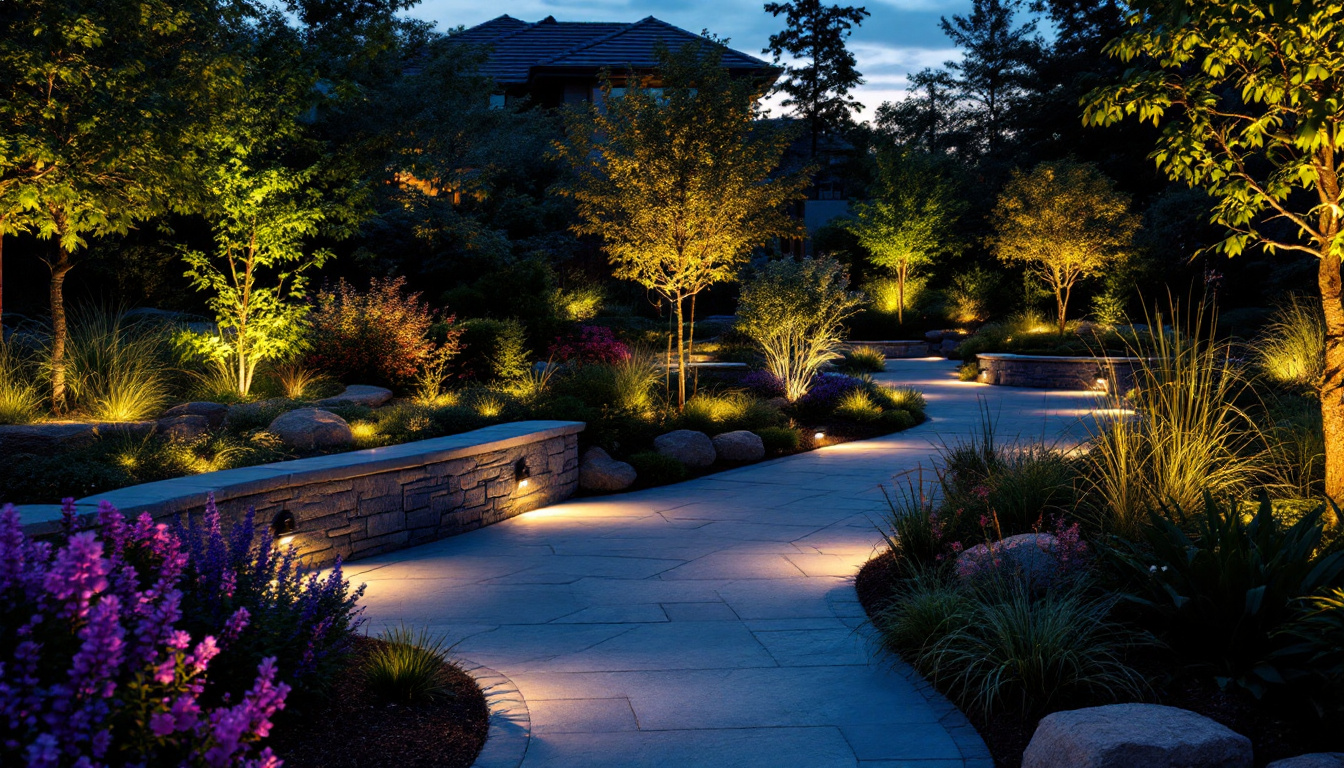
landscape lighting plays a crucial role in enhancing the beauty and functionality of outdoor spaces. For lighting contractors, understanding the principles, techniques, and products related to landscape lighting is essential for delivering exceptional results to clients. This guide aims to provide valuable insights into the world of landscape lighting, offering practical advice and considerations for lighting contractors.
Before diving into the specifics of landscape lighting design and installation, it is important to grasp the fundamental concepts that underpin this field. Landscape lighting is not merely about illuminating outdoor areas; it is about creating ambiance, enhancing safety, and showcasing architectural features. The right lighting can transform a mundane garden into a magical retreat, making it an essential element for any outdoor space.
Moreover, landscape lighting can extend the usability of outdoor areas, allowing homeowners to enjoy their gardens and patios long after the sun has set. By strategically placing lights, one can create a sense of depth and dimension, drawing the eye to various elements of the landscape. This not only enhances the overall aesthetic but also offers practical benefits, such as deterring intruders and preventing accidents in poorly lit areas.
There are several types of landscape lighting that contractors should be familiar with. Each type serves a different purpose and can dramatically alter the aesthetic of a space. Common types include:
When planning a landscape lighting project, several key considerations must be taken into account. These factors will influence the design and installation process:
Effective landscape lighting design requires a balance between art and science. The goal is to create a harmonious environment that enhances the natural beauty of the landscape while providing adequate illumination.
One of the most effective techniques in landscape lighting is layering light. This involves using different types of fixtures at varying heights and intensities to create depth and dimension. A well-layered lighting scheme may include:
Focal points are essential in landscape lighting design. By strategically placing lights to highlight specific features, contractors can guide the viewer’s eye and create a sense of drama. Common focal points include:
Shadows can be just as important as light in landscape lighting. By positioning fixtures to cast shadows, contractors can create a sense of mystery and intrigue. This technique can be particularly effective when illuminating textured surfaces, such as stone walls or foliage.
Once the design has been finalized, the next step is installation. Proper installation techniques are crucial for ensuring that the lighting system functions effectively and lasts for years to come.
Before installation begins, a detailed layout plan should be developed. This plan should include the locations of all fixtures, wiring routes, and any necessary power sources. Considerations include:
Proper wiring is essential for a safe and efficient lighting system. Contractors should be familiar with low-voltage systems, which are commonly used in landscape lighting. Key points to consider include:
After installation, it is important to test the lighting system to ensure it operates as intended. This includes checking for:
Like any other system, landscape lighting requires regular maintenance to ensure optimal performance. Contractors should educate clients on the importance of upkeep and offer maintenance services as part of their offerings.
Over time, dirt, debris, and weather conditions can affect the performance of lighting fixtures. Regular cleaning helps maintain brightness and prolongs the lifespan of the fixtures. Recommendations include:
As seasons change, so do the needs of the landscape. Contractors should recommend seasonal adjustments to lighting systems. This may involve:
The market for landscape lighting products is vast, and selecting the right fixtures is critical for a successful project. Contractors should consider various factors when choosing products for their clients.
Durability is key in outdoor lighting products. Fixtures made from high-quality materials, such as stainless steel or brass, are more resistant to corrosion and wear. Additionally, UV-resistant plastics can help prevent fading and degradation over time.
With growing awareness of environmental issues, energy-efficient lighting options are increasingly popular. LED fixtures, for example, consume significantly less energy than traditional incandescent bulbs and have a longer lifespan. Educating clients about the benefits of energy-efficient options can enhance the value of the contractor’s services.
As technology advances, smart lighting solutions are becoming more accessible. These systems allow for remote control, scheduling, and automation, providing clients with convenience and flexibility. Contractors should stay informed about the latest smart lighting products and how they can be integrated into landscape designs.
In a competitive market, effective marketing strategies are essential for lighting contractors to attract and retain clients. Here are some approaches to consider:
Visual evidence of successful projects can be a powerful marketing tool. Contractors should consider creating a portfolio that highlights various landscape lighting designs. High-quality photographs and case studies can demonstrate expertise and inspire potential clients.
Building relationships with landscape architects, builders, and real estate agents can lead to valuable referrals. Networking within the industry can help contractors establish themselves as trusted professionals in landscape lighting.
In today’s digital age, having a strong online presence is crucial. Contractors should invest in a user-friendly website that showcases their services, testimonials, and project galleries. Additionally, engaging with clients through social media platforms can help build brand awareness and foster community connections.
Landscape lighting is an art that requires a blend of creativity, technical knowledge, and attention to detail. For lighting contractors, mastering the principles of landscape lighting design and installation is essential for delivering exceptional results. By understanding the various types of lighting, design techniques, installation practices, and maintenance requirements, contractors can create beautiful and functional outdoor spaces that enhance their clients’ properties.
As the demand for landscape lighting continues to grow, staying informed about the latest products and trends will ensure that contractors remain competitive in the industry. With the right approach, landscape lighting can transform ordinary outdoor spaces into extraordinary environments, providing lasting enjoyment for clients and their families.
Ready to elevate your landscape lighting projects with the finest selection of spec-grade lighting products? Look no further than LumenWholesale, where we provide contractors with exceptional lighting solutions at wholesale prices that can’t be beaten. Our commitment to quality and affordability ensures that you have access to the best lighting products for any design, without the burden of inflated costs. Plus, with free shipping on bulk orders, you can stock up on premium lighting essentials and maximize your project’s potential. Discover the ideal fusion of performance, value, and convenience at Wholesale Lighting at the Best Value. Your clients’ outdoor spaces deserve the brilliance of LumenWholesale.

Discover how LED under-counter lighting is revolutionizing the projects of lighting contractors.

Discover the innovative strategies lighting contractors use for T8 LED conversions.

Discover how lighting contractors can elevate their projects with outdoor solar pathway lights.

Discover the frequent pitfalls lighting contractors encounter when installing factory fans.